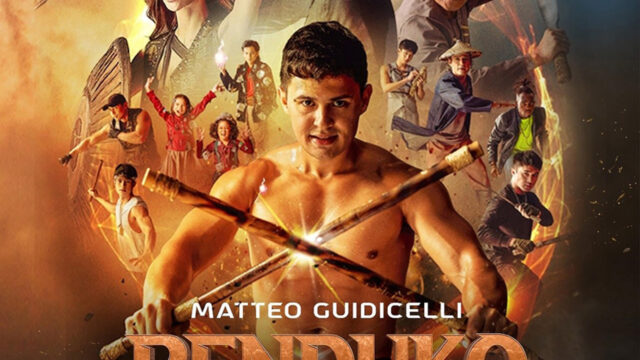Metro Manila Film Festival 2023: A fascinating modern take on a classic Pinoy superhero

Movie Review
Penduko
Written and directed by Jason Paul Laxamana
MTRCB Rating: G
By Zsarlene B. Chua
AS ONE of the most beloved Philippine superhero franchises, the challenge in remaking Pedro Penduko is how to make it a fresh experience for today’s audience while staying true to its roots as National Artist for Literature Francisco V. Coching’s 1956 creation. This year’s Penduko, an entry to the Metro Manila Film Festival, has adequately checked those boxes.
Written and directed by Jason Paul Laxamana, the film stars Matteo Guidicelli as the titular Pedro Penduko, the son of a local mananambal or a traditional folk healer, Apo Tisot (played by John Arcilla). Pedro, seeing his father heal the people in their village without accepting money for his services all while living in a shack, develops a disdain for his father and his lifestyle so he runs away to seek a better life in the city.
In the city, he lives in squalor, surrounded by disorganized occult materials while using his own powers to scam money at a local perya (fair) to fund his hallucinogenic habit (provided by a group of elves). He is eventually found by Wendy (Phoebe Walker), a recruiter for an organization called Hatinggabi (Midnight) that seeks gifted people to help those who are affected by sorcery — if they can afford to pay for the help.
With this, Pedro thinks he’s found his purpose in life — where he can make money off of his powers — and prove his father wrong. Or will he?
In this Penduko, Mr. Laxamana was able to weave the qualities of the classic Pedro Penduko character with an amazing world-building that’s extremely expansive and full of potential for a multi-film expansion, a Penduko Cinematic Universe, if you will.
Unlike previous Penduko iterations where the setting is in a fantastical world (think Janno Gibbs’ Ang Pagbabalik ni Pedro Penduko in 1994 or Pedro Penduko: The Return of the Comeback in 2000), this film is rooted in Philippine mythology, culture, and practices, not unlike Budjette Tan’s Trese where fantasy is anchored on reality. For example, Hatinggabi is an underground organization operating inside an abandoned building and which works like a call center for people who are under the mercy of a manggagaway or a sorcerer — in other words, Hatinggabi is a telehealth service with home visits for cursed people.
The gifted are divided into healers — mananambal — or sorcerers — manggagaway. But the sorcerers here aren’t portrayed as simply evil as the film makes clear that even sorcerers have roles to fulfill and that there are rules that need to be followed: the most important of which is to never kill a human being or you will fall under a very bad curse that will turn you into no more than a beast.
In a lot of ways, this kind of world-building and storytelling is reminiscent of animé series like Jujutsu Kaisen (2020) or YuYu Hakusho (1992) — where you have a world with strict rules for people with powers and yet is a world where it lets you define what you do with the powers you’re gifted with. It’s easy to see why Mr. Laxamana approached the film this way, as in previous interviews he mentioned that he was a fan of 1990s action animé series, many of which focus on the topics of self-determination and identity, Neon Genesis Evangelion (1995), for one.
(I’m not the only to make the connection as a group of teens walking out from the same screening pointed out how the film is like Jujutsu Kaisen, a series about Japanese sorcerers.)
The story also forays into social commentary, including how capitalism is now intrinsic in every facet of human life and even makes a case for the importance of protecting indigenous groups against the encroachment of capitalism to protect invaluable cultural practices. The commentary was neatly folded into the narrative of the entire film.
The ending, too, was satisfying in that there were no compromises and showed how Pedro, until the end, remains a very, very flawed character.
Is this a good movie? Yes.
The film may fall prey to overly dramatic acting from Mr. Guidicelli as he tried to prove that he also has comedic timing. However, his acting does shine through when it counts.
The movie is also good for how Filipino culture is portrayed as something that has so many layers, so many stories — this writer learned so much about folk healing in two hours (and is now eager to learn more!).
The costume design was also a very high point of the film as modern Filipiniana, especially for the women, was front and center. Candy Pangilinan’s terno was a dream with its high-low full skirt, and so was Phoebe Walker’s terno coat with a design reminiscent of a good ‘ol Good Morning towel.
Overall, watch Penduko if you want a film where you can bring your children to (please do guide them during the scenes where Pedro is partaking in hallucinogens) and if you’re interested in learning more about a less-talked-about facet of Philippine culture.



